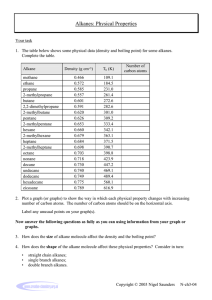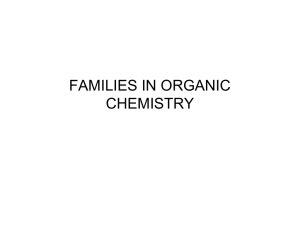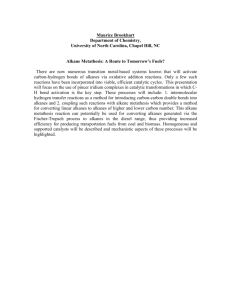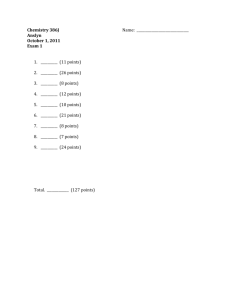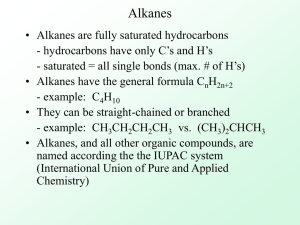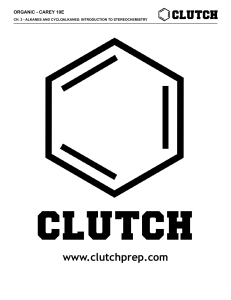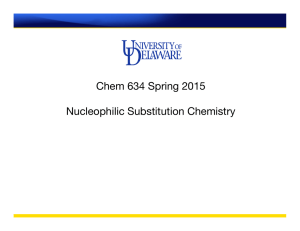Chem R340 Exam 1 Study Topics Chapter 1
advertisement
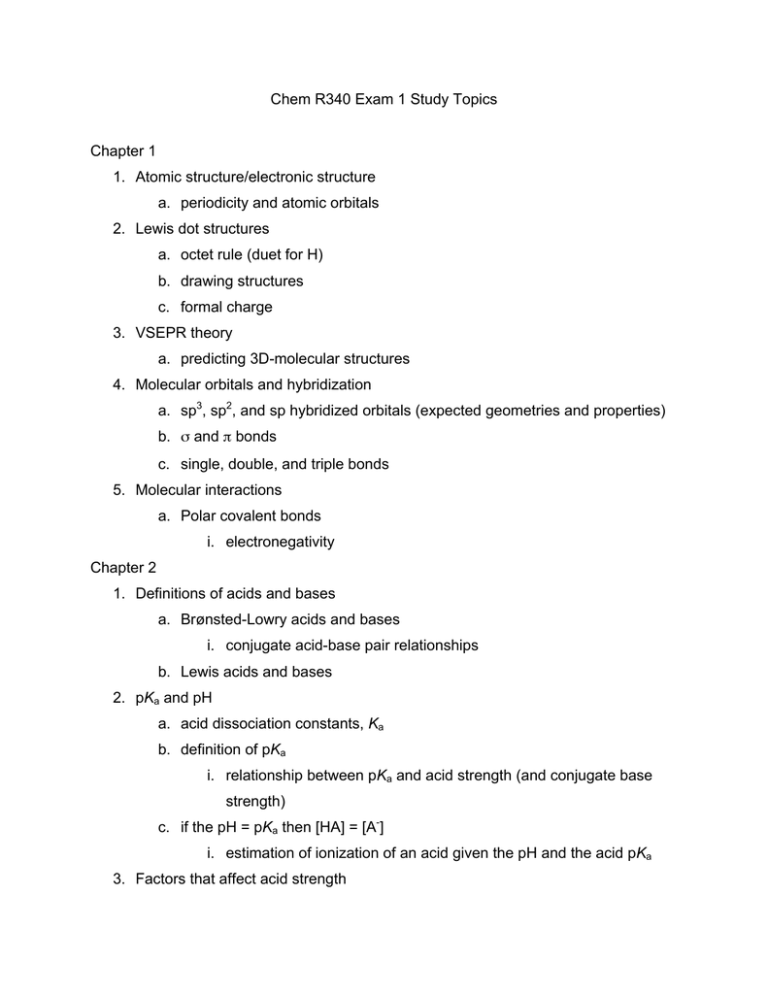
Chem R340 Exam 1 Study Topics Chapter 1 1. Atomic structure/electronic structure a. periodicity and atomic orbitals 2. Lewis dot structures a. octet rule (duet for H) b. drawing structures c. formal charge 3. VSEPR theory a. predicting 3D-molecular structures 4. Molecular orbitals and hybridization a. sp3, sp2, and sp hybridized orbitals (expected geometries and properties) b. σ and π bonds c. single, double, and triple bonds 5. Molecular interactions a. Polar covalent bonds i. electronegativity Chapter 2 1. Definitions of acids and bases a. Brønsted-Lowry acids and bases i. conjugate acid-base pair relationships b. Lewis acids and bases 2. pKa and pH a. acid dissociation constants, Ka b. definition of pKa i. relationship between pKa and acid strength (and conjugate base strength) c. if the pH = pKa then [HA] = [A-] i. estimation of ionization of an acid given the pH and the acid pKa 3. Factors that affect acid strength a. resonance b. electronegativity c. atomic size d. hybridization e. inductive effects Chapter 3 1. Molecular and structural formulas a. combining power of elements b. different ways of drawing structural formulas 2. Hydrocarbons a. saturated hydrocarbons: alkanes b. unsaturated hydrocarbon: alkenes, alkynes, aromatics 3. Alkanes a. alkane structure i. bonding (sp3 hybridized) ii. sigma bonds iii. conformations iv. drawing structural formulas b. constitutional (structural) isomers 4. Alkane nomenclature a. primary, secondary, tertiary, and quaternary carbons b. alkane names for C1-C10 containing linear chains (methane, ethane,...) c. common nomenclature d. alkyl groups e. IUPAC nomenclature system i. naming alkanes ii. naming cycloalkanes 1. cis-trans isomers in cycloalkanes iii. naming alkyl halides 5. Families of organic compounds a. alkenes b. alkynes c. alkyl halides d. alcohols e. ethers f. aldehydes g. ketones h. carboxylic acids i. esters j. amines k. amides 6. Secondary forces a. van der Waals forces (London forces) b. dipole-dipole interactions c. hydrogen bonding 7. Physical properties of organic compounds a. boiling and melting points and factors that effect them b. density c. solubility 8. Conformation of alkanes a. Newman projections b. staggered and eclipsed conformations c. cyclohexane conformations (chair, boat, etc.) i. axial and equatorial positions on cyclohexane rings ii. conformations of substituted cyclohexane rings 1. stability of axial and equatorial substitutions on cyclohexane rings

